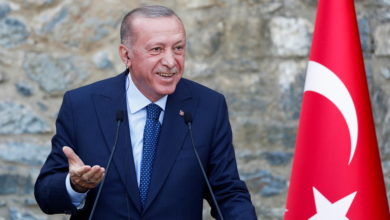Americans Don’t Trust One of the Best Ways to Curb Wildfires

LIn New Mexico, there were two wildfires that erupted simultaneously last month. Calf Canyon – Hermits Peak Fire had burned nearly 260,000 acres by May 12th. Hermits Peak was originally a 1,200-acre prescribed fire that began in April. It quickly grew to over 7,500 acres due to high winds and dry weather.
To reduce forest growth, prescribed fires can be lit to prevent wildfires. When they go as planned—as the vast majority do—they don’t make news. However, when wildfires get out of control they become newsworthy, which could lead to a loss in public trust.
A 2006 report from the USDA Forest Service found that between 80% and 90% of Americans consider prescribed burning an appropriate wildfire management tool—but that doesn’t mean they are fully enthusiastic about it: only a third strongly approve its use. Real-life policy is based on public concerns about smoke and escaped fires. For 18 years, Washington state didn’t burn on state lands due to air quality concerns, but worsening wildfires pressed the state to reverse course this year. Additionally, prescribed fire programs have often suspended following an escape—particularly in cases where people lost their homes.
This story was first published in the Climate is Everything newsletter. Register here
“People recognized the benefits… [but] when we have a prescribed burn that escapes and becomes a major wildfire, perception shifts to them being scary,” says Rebecca Miller, a postdoctoral scholar at the Huntington-USC Institute on California and the West who has researched public and policy perceptions about controlled burns. “It makes science-based policies to enact burns more challenging when there’s pushback after one or two incidents get out of hand.”
It is rare for prescribed fire escapes to occur. The Forest Service conducted a 2006 survey of prescribed fires and found less than one percent of them escaped from its control between 2003-2005. This snapshot may not be representative of the entire U.S. prescribed fires, as only one third were performed by the Forest Service in these years. However, there are other studies that support the fact that escape rates are very low. For instance, prescribed burn associations in five Great Plains states reported 16 escapes out of 1,094 burns conducted between 1995 and 2012—a rate of less than 2%.
The broad consensus among wildfire experts is that the benefits of prescribed fires—when done as controlled and safely as possible—are enormously beneficial while carrying relatively small risk. Study of prescribed burning in Sierra Nevada Volcanic National Park and Lassen Volcanic National Park have shown that they can decrease wildfire intensity up to 70% when done properly.
READ MORE After Visiting Both Ends of the Earth, I Realized How Much Trouble We’re In
“Fire efficiently burns dead wood, pine litter, and grasses so when summer or fall fire comes through, there’s less to burn. The science is absolutely unequivocal on it,” says Susan J. Prichard, research scientist at the University of Washington School of Environmental and Forest Sciences.
The likelihood of wildfires raging is rising due to climate change. A study released last month predicted that if temperatures rise to 2°C above pre-industrial levels, there will be an average of 340 extreme wildfires annually in the fire-prone western U.S., compared with an average of 130 such events that happened between 1986 and 2015. The study’s researchers, from Western Colorado University in Gunnison, defined extreme wildfires as those that spread about 2,700 acres a day.
Wildfires have become more severe. Prescribed burning is now a popular mitigation tool. There were 800,000 prescribed fires between 2017-2019, up from 44,000 in 2007. The chart below illustrates how this has led to millions of more acres being treated.
Experts agree that more prescribed burning is necessary, despite the increase in fires. This has been a long-held belief of Native American tribes. The problem, they explain, is that the Forest Service’s zero-fire rules—also known as 10 a.m. policies, as all fires had to be extinguished by that hour the day after they were reported—between 1935 and 1978 resulted in over-vegetation that we are now scrambling to cut back, at the same time that summers are getting longer, hotter, and dryer due to climate change.
Federal agencies that are responsible for managing U.S. land manually cut back or burned some 3 million acres in the 2018 fiscal year—a fraction of the estimated 100 million acres within their jurisdictions that are at high risk from wildfire, according to a report from the Government Accountability Office.
“To deal with this scale, we need every tool in the toolbox. Management of wildfires caused by lightning strikes and manual cutting or prescribed burning, as well livestock grazing, are all necessary. We need all of it,” says Miller. “We’re not going to mechanically thin our way out of this problem.”
Read More From Time





